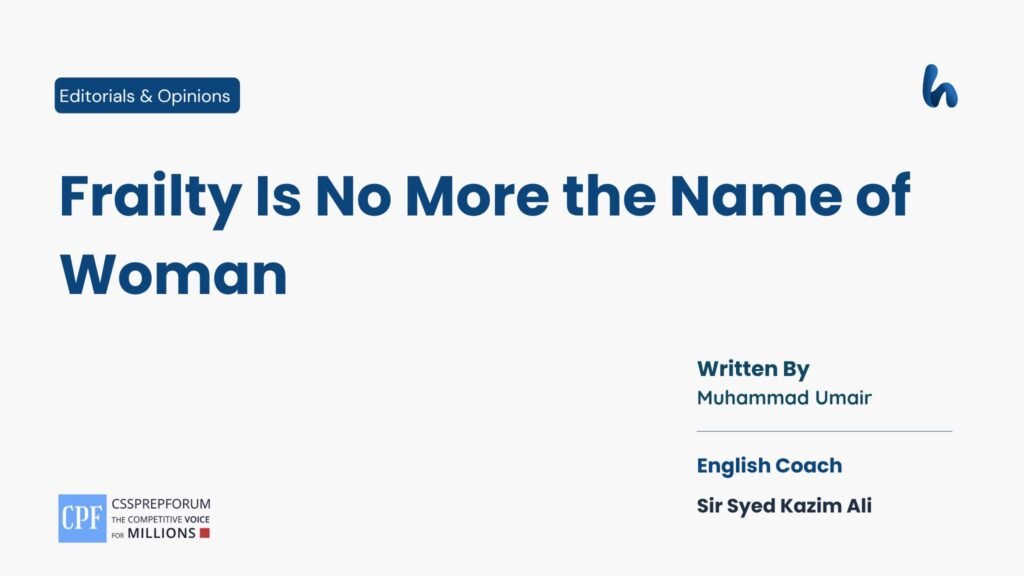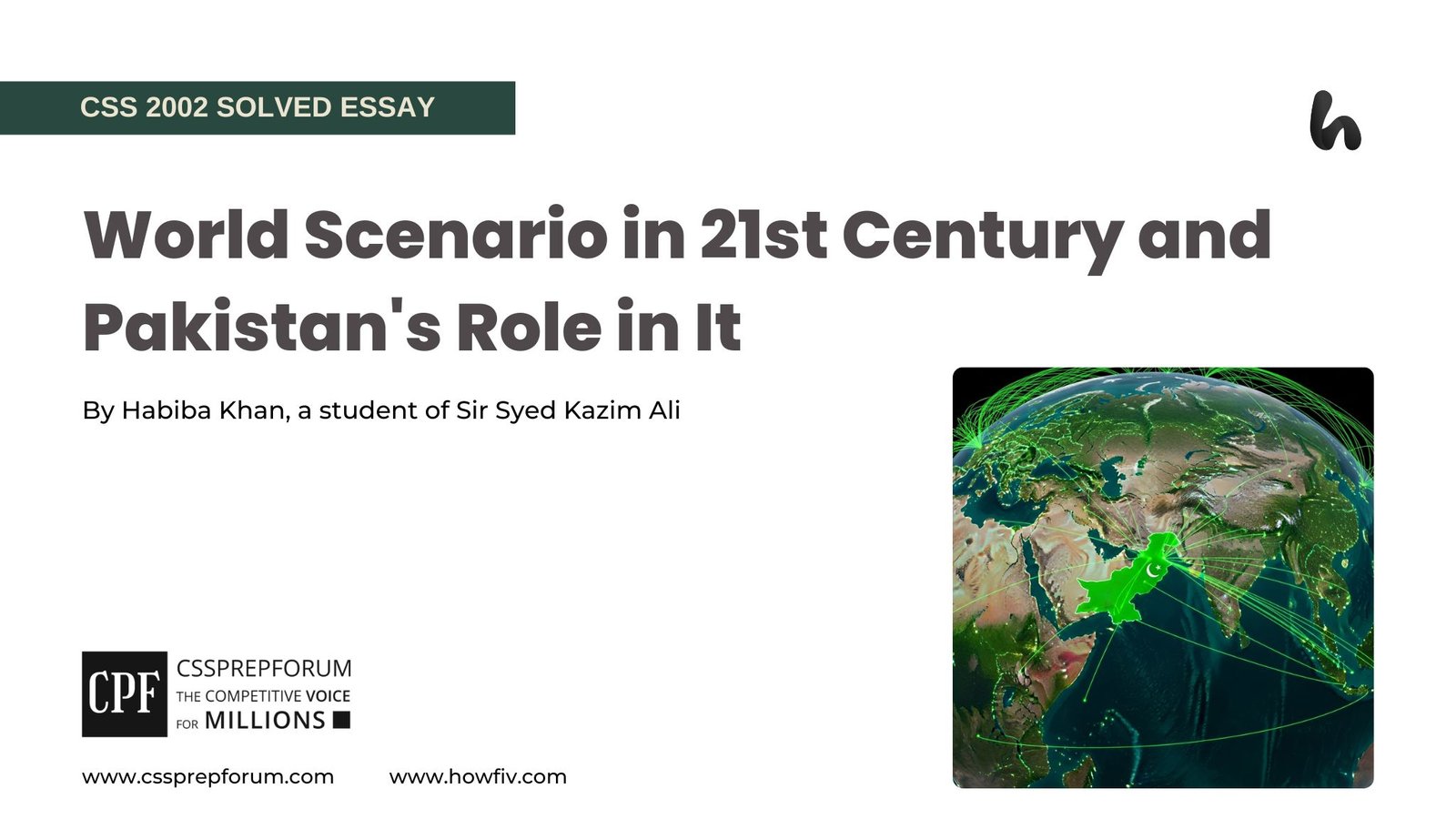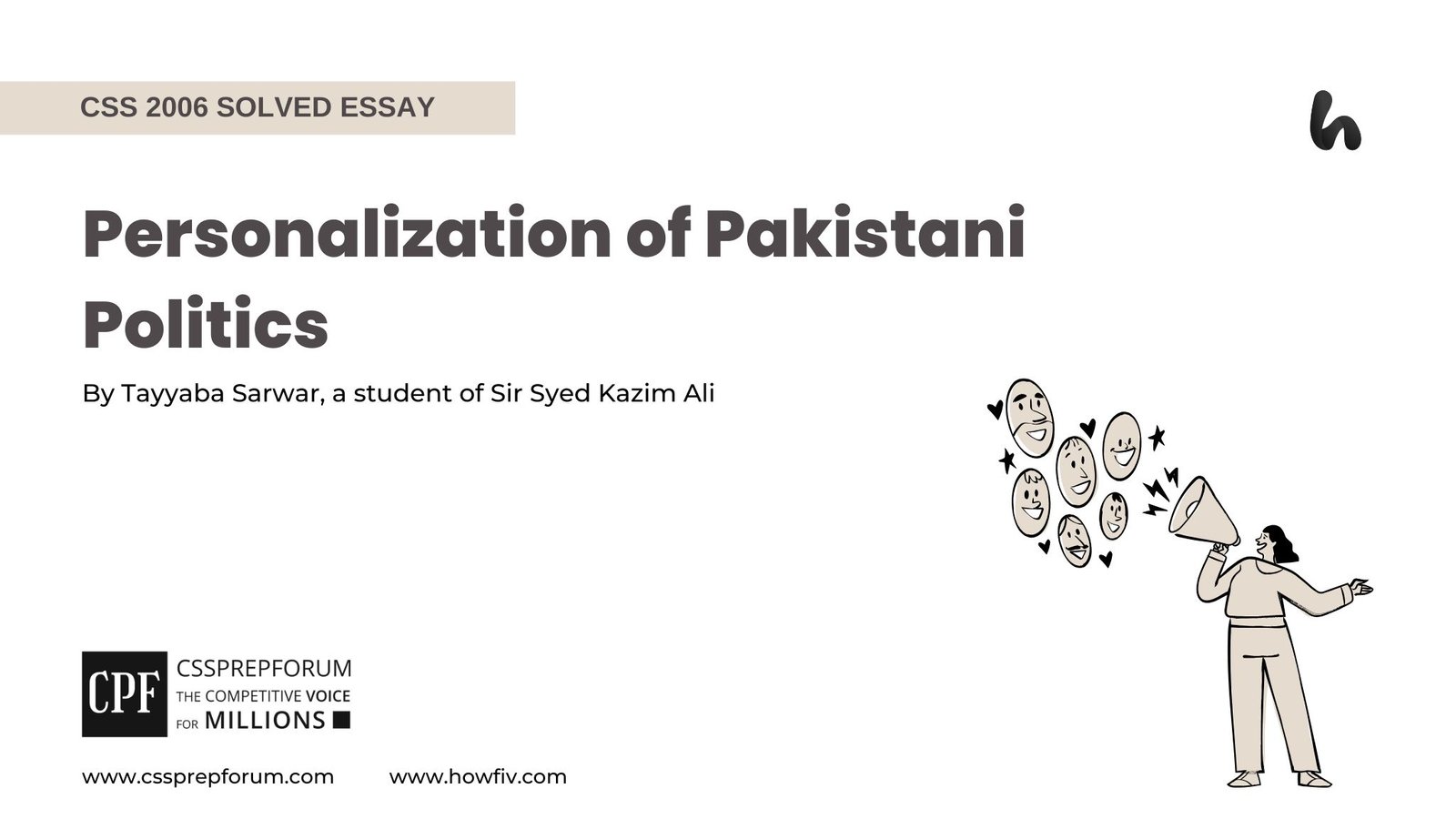Frailty Is No More the Name of Woman | Editorials by CSS & PMS Aspirants
The following article, “Frailty Is No More the Name of Woman“, is written by Muhammad Umair, a student of Sir Syed Kazim Ali. Moreover, the article is written on the same pattern, taught by Sir to his students, scoring the highest marks in compulsory subjects for years. Sir Kazim has uploaded his students’ solved past paper questions so other thousands of aspirants can understand how to crack a topic or question, how to write relevantly, what coherence is, and how to include and connect ideas, opinions, and suggestions to score the maximum.

Society has labelled women as fragile, weak, and incapable of enduring the pressures of leadership, science, or public life for centuries. Indeed, these outdated stereotypes, reinforced by cultural norms and historical biases, confined women to domestic roles while denying them opportunities in politics, education, and sports. However, history and modern advancements have thus repeatedly proven otherwise as women have demonstrated extraordinary resilience in their personal lives and struggles, and have excelled in governance, scientific innovation, activism, athletics, and literature.

Moving directly to the heart of the assertion, it is a fact that women have governed nations, shaped policies, led social movements and challenged all looming stereotypes all the time. Below are women’s contributions to politics, science, and activism, validating that frailty is no longer the name of women.
1-Women in Politics Have Challenged the Stereotype of Weak Leadership
First and foremost, the outdated belief that women are incapable of handling leadership responsibilities has been shattered by countless female leaders who have steered political crises, economic turmoil, and wars with remarkable resilience. For instance, Benazir Bhutto – Pakistan’s first female Prime Minister – defied deep-rooted patriarchal norms and proved that women are not frail. Moreover, Kamala Harris, the first female Vice President of the United States, has broken centuries-old barriers, paving the way for women in American politics. Thus, these women have demonstrated that political strength is not about gender but about vision, intelligence, and perseverance. Therefore, this indicates that women are no longer synonymous with frailty.
2-Women in Science Have Defied Intellectual Biases
Similarly, the belief that women are intellectually inferior has been dismantled by groundbreaking contributions to science and innovation. For example, Marie Curie – the only person to win two Nobel Prizes in Physics and Chemistry – revolutionized science with her discoveries of radium and polonium, which laid the foundation for modern nuclear physics and medical advancements. In fact, without her contributions, cancer treatments and X-ray technology would not exist in their current form. Despite being denied access to formal education in her early years, she persevered and proved that gender has no bearing on intelligence. So, this confirms that frailty is no longer a defining trait of women.
3-Women in Activism Have Confronted Injustice with Courage
More importantly, another powerful argument is women’s courage in standing up against oppression, even in the face of extreme danger. For instance, Malala Yousafzai, who survived an assassination attempt by the Taliban for advocating girls’ education, refused to be silenced and became the youngest Nobel Prize laureate in history. Therefore, her resilience under life-threatening circumstances shows the inner strength many women possess, which thus contradicts the notion that they are fragile.
4-Women in Sports Have Redefined Physical Strength
Moreover, women have also shattered myths about physical inferiority by dominating the world of sports. For years, athletics was considered a male-dominated domain where women were believed to be physically incapable of competing at the same level. However, female athletes have repeatedly disproved this notion. For instance, Serena Williams, one of the greatest tennis players in history, has won 23 Grand Slam titles, showing extraordinary strength and endurance. Similarly, Simone Biles, the most decorated gymnast of all time, has set world records in a sport requiring unmatched strength, agility, and mental toughness. Hence, it is established that frailty is no longer an inherent aspect of women.
4-Women in Literature and the Arts Have Redefined Creative Power
Lastly, women have proven their resilience and intellectual depth in literature and the arts besides politics, science, activism, and sports. For illustration, from Jane Austen and Virginia Woolf to Maya Angelou and Toni Morrison, female writers have consistently shaped global narratives; challenged societal norms; and given voice to the unheard. In addition, in visual arts, Frida Kahlo and Georgia O’Keeffe redefined artistic expression and proved that creativity is not bound by gender. Despite cultural restrictions and personal struggles, these women persevered and left lasting legacies. Therefore, their contributions further demonstrate that frailty is no longer the name of women.
Some Critics Always Question Women’s Strength
Despite overwhelming evidence, some critics argue that women are biologically weaker than men and – therefore – less capable in politics, science, and sports. According to their argument, women are naturally more emotional and less rational, which makes them unfit for positions of power. However, this argument is fundamentally flawed. Truly, the notion that women are too emotional ignores the fact that many male leaders have made emotionally driven decisions that led to wars; economic crises; and failed policies. Ultimately, strength is not determined by physical muscle alone but also by resilience, intelligence, and perseverance -qualities that women have consistently displayed throughout history.
Some Critics Still Undermine Women’s Strength
Next, some argue that biological differences inherently limit women’s strength and claim that men’s superior muscle mass grants them an edge in physical endurance and that women’s emotional tendencies make them less suited for leadership. Moreover, history has often highlighted male achievements, which reinforces that women have contributed less to progress. However, this view overlooks the systemic barriers that restrict women’s opportunities. While men may excel in certain physical aspects, women have consistently demonstrated unparalleled resilience, intelligence, and determination. Thus, from political leadership to scientific breakthroughs, women have shattered limitations, which proves that true strength is not limited to a specific gender and is defined by perseverance and opportunity.
In light of these arguments, the belief that women are inherently frail has been thoroughly dismantled by history. In fact, from leading nations; revolutionizing science; and standing against oppression to excelling in elite sports, women have proven that strength is not defined by gender but by determination and opportunity. Although societal biases still linger, they do not reflect reality. And the world has witnessed female presidents, Nobel laureates, astronauts, and world-class athletes – all of whom stand as living proof that women are just as capable; resilient; and powerful as men. Therefore, it is time for society to abandon outdated stereotypes and embrace the undeniable truth: frailty is no longer the name of a woman.

CSS Solved Past Papers’ Essays
Looking for the last ten years of CSS and PMS Solved Essays and want to know how Sir Kazim’s students write and score the highest marks in the essays’ papers? Then, click on the CSS Solved Essays to start reading them.
CSS Solved Essays
CSS Solved General Science & Ability Past Papers
Want to read the last ten years’ General Science & Ability Solved Past Papers to learn how to attempt them and to score high? Let’s click on the link below to read them all freely. All past papers have been solved by Miss Iqra Ali & Dr Nishat Baloch, Pakistan’s top CSS GSA coach having the highest score of their students. General Science & Ability Solved Past Papers












